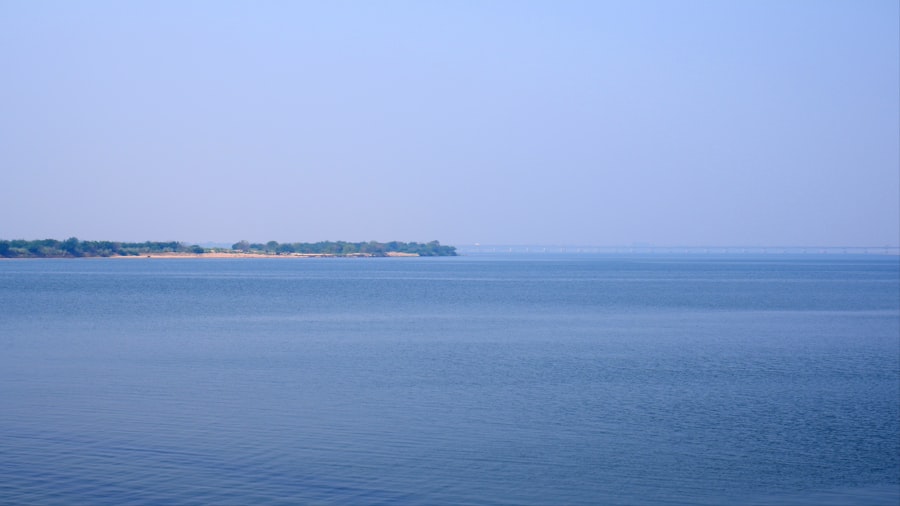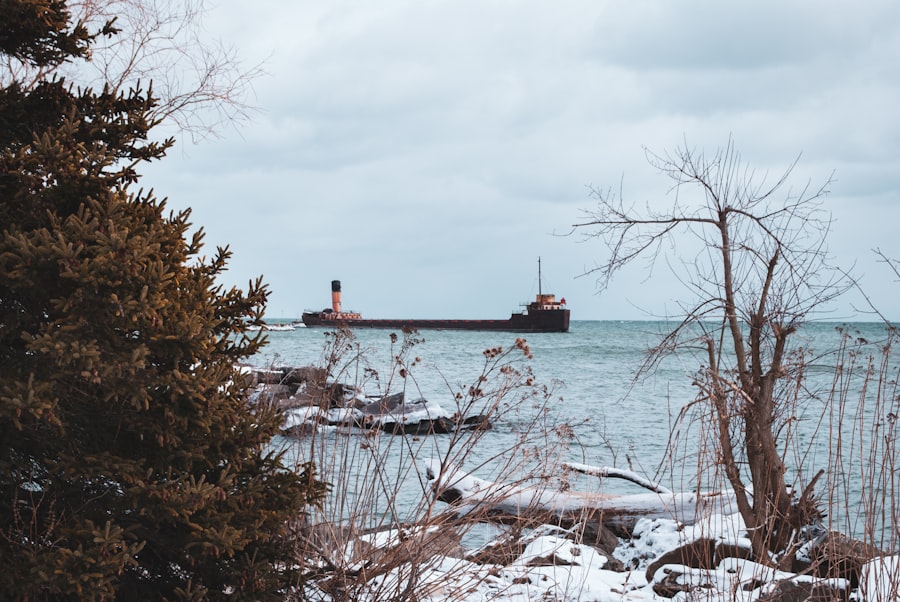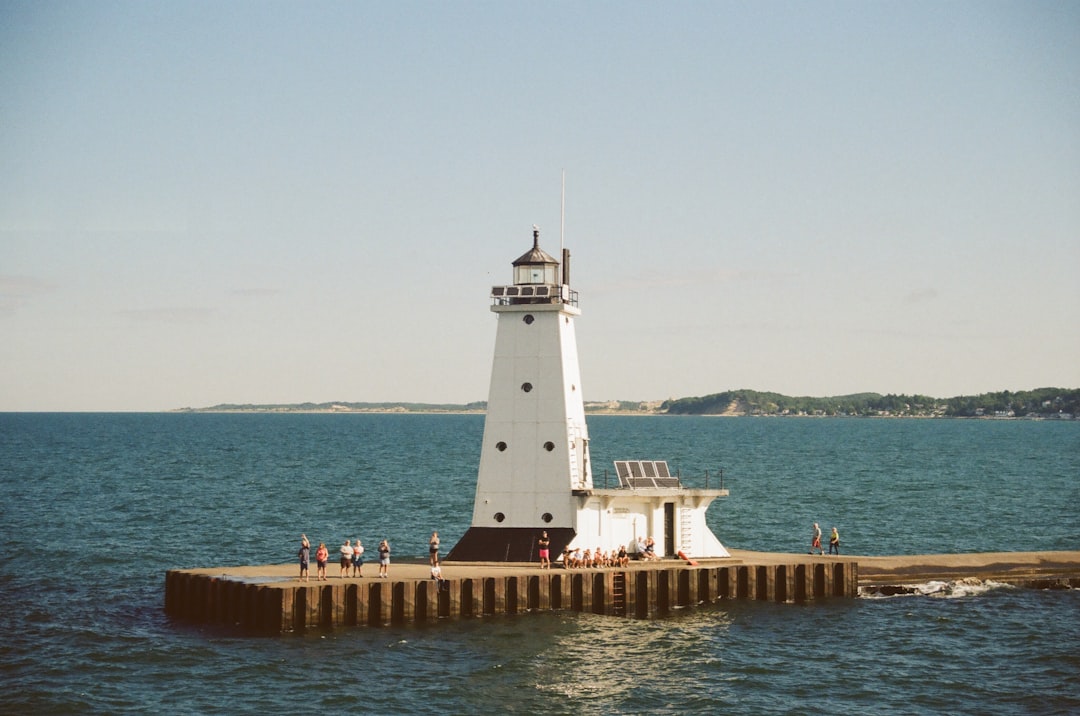The Great Lakes, a magnificent collection of five interconnected freshwater lakes—Superior, Michigan, Huron, Erie, and Ontario—form the largest group of freshwater lakes in the world by total area. Spanning the border between the United States and Canada, these lakes cover approximately 94,250 square miles and hold about 20% of the world’s unfrozen surface freshwater. The Great Lakes are not only a vital natural resource but also a significant cultural and economic asset for the surrounding regions.
Their vast waters and diverse ecosystems support a wide array of wildlife and provide recreational opportunities for millions of people. The Great Lakes have played a crucial role in shaping the history and development of North America. They served as a major transportation route for early settlers and continue to be essential for trade and commerce today.
The lakes are surrounded by numerous cities and towns, each contributing to the rich tapestry of life that thrives in this region. From bustling urban centers to serene rural landscapes, the Great Lakes are a source of pride and identity for many communities, making their protection and preservation a shared responsibility.
Key Takeaways
- The Great Lakes are a group of five interconnected freshwater lakes located in North America, which are important for their ecological, economic, and cultural significance.
- The Great Lakes ecosystem supports a diverse range of plant and animal species, provides drinking water for millions of people, and contributes to the region’s economy through fishing, tourism, and shipping.
- Threats to the Great Lakes include pollution, invasive species, habitat destruction, and climate change, which can have detrimental effects on the ecosystem and the communities that depend on it.
- Guardians, including government agencies, non-profit organizations, advocacy groups, and indigenous communities, play a crucial role in protecting the Great Lakes through conservation efforts, policy advocacy, and community engagement.
- Innovative technologies and solutions, along with education and outreach efforts, are key components in the ongoing conservation and protection of the Great Lakes, and success stories demonstrate the positive impact of these efforts on the ecosystem and the communities that rely on it.
The Importance of the Great Lakes Ecosystem
The ecosystem of the Great Lakes is incredibly diverse, encompassing a variety of habitats such as wetlands, forests, and coastal areas. This rich biodiversity supports numerous species of fish, birds, and other wildlife, making it one of the most important ecological regions in North America. The lakes themselves are home to over 170 species of fish, including economically significant species like walleye and lake trout.
Additionally, the wetlands surrounding the lakes serve as critical breeding grounds for migratory birds and provide essential filtration services that help maintain water quality. Beyond their ecological significance, the Great Lakes also play a vital role in the economy of the surrounding regions. They support commercial fishing, tourism, and recreational activities that contribute billions of dollars annually to local economies.
The lakes are also crucial for agriculture, providing irrigation and serving as a source of drinking water for millions of residents. The interconnectedness of these ecosystems highlights the importance of maintaining their health and integrity for both environmental sustainability and economic prosperity.
Threats to the Great Lakes

Despite their immense value, the Great Lakes face numerous threats that jeopardize their health and sustainability. Pollution from agricultural runoff, industrial discharges, and urban development has led to declining water quality in many areas. Nutrient loading, particularly phosphorus, has resulted in harmful algal blooms that can produce toxins harmful to both aquatic life and human health.
These blooms not only disrupt local ecosystems but also impact recreational activities and tourism, leading to economic losses for communities reliant on these resources. Invasive species pose another significant threat to the Great Lakes ecosystem. Species such as zebra mussels and Asian carp have disrupted food chains and outcompeted native species for resources.
The introduction of these non-native species has led to significant ecological imbalances, threatening the biodiversity that is essential for a healthy ecosystem. Climate change further exacerbates these challenges by altering water temperatures, affecting fish populations, and increasing the frequency of extreme weather events that can lead to flooding and erosion.
The Role of Guardians in Protecting the Great Lakes
| Guardian Role | Responsibilities |
|---|---|
| Monitoring | Regularly check water quality and report any issues |
| Enforcement | Ensure compliance with environmental regulations and laws |
| Education | Inform the public about the importance of protecting the Great Lakes |
| Advocacy | Advocate for policies and actions that benefit the Great Lakes ecosystem |
Guardianship of the Great Lakes is a collective responsibility that involves various stakeholders working together to protect this invaluable resource. Local communities, government agencies, non-profit organizations, and Indigenous groups all play critical roles in safeguarding the lakes. These guardians are dedicated to monitoring water quality, restoring habitats, and advocating for policies that promote sustainable practices.
Their efforts are essential in raising awareness about the importance of protecting the Great Lakes for future generations. Community engagement is a vital aspect of guardianship. Local residents often participate in clean-up events, habitat restoration projects, and educational programs aimed at fostering a sense of stewardship for the lakes.
By involving citizens in conservation efforts, guardians can cultivate a deeper understanding of the challenges facing the Great Lakes and inspire collective action to address them. This grassroots approach not only empowers individuals but also strengthens community ties as people come together to protect their shared environment.
Government Agencies and Regulations
Government agencies at both state and federal levels play a pivotal role in regulating activities that impact the Great Lakes. The U.S.
These agencies work collaboratively with local governments to implement regulations that address issues such as wastewater treatment, stormwater management, and agricultural practices. In addition to regulatory frameworks, various initiatives have been established to promote conservation efforts in the Great Lakes region. The Great Lakes Restoration Initiative (GLRI) is one such program that provides funding for projects aimed at restoring habitats, improving water quality, and combating invasive species.
By supporting research and community-based projects, government agencies can foster collaboration among stakeholders and ensure that conservation efforts are effective and sustainable.
Non-Profit Organizations and Advocacy Groups

Numerous non-profit organizations and advocacy groups are dedicated to protecting the Great Lakes through education, research, and community engagement. Organizations such as the Alliance for the Great Lakes and the Great Lakes Fishery Commission work tirelessly to raise awareness about environmental issues affecting the lakes while advocating for policies that promote sustainable practices. These groups often collaborate with government agencies, local communities, and businesses to develop comprehensive strategies for conservation.
Advocacy efforts by these organizations have led to significant policy changes aimed at protecting water quality and preserving natural habitats. Through public campaigns, educational programs, and grassroots mobilization, non-profits have successfully engaged citizens in conservation efforts while holding industries accountable for their environmental impact. Their work is crucial in ensuring that the voices of local communities are heard in decision-making processes related to the Great Lakes.
Indigenous Communities and Their Role as Guardians
Indigenous communities have long been stewards of the land surrounding the Great Lakes, possessing deep cultural connections to these waters that span generations. Their traditional ecological knowledge offers valuable insights into sustainable practices that can benefit modern conservation efforts. Indigenous peoples view themselves as guardians of the environment, emphasizing a holistic approach to resource management that respects the interconnectedness of all living things.
In recent years, there has been a growing recognition of the importance of including Indigenous voices in discussions about Great Lakes protection. Collaborative initiatives between Indigenous communities and government agencies have emerged, focusing on co-management strategies that honor traditional knowledge while addressing contemporary environmental challenges. By integrating Indigenous perspectives into conservation efforts, stakeholders can develop more effective solutions that reflect a deep respect for both nature and cultural heritage.
Innovative Technologies and Solutions for Great Lakes Protection
Advancements in technology have opened new avenues for protecting the Great Lakes ecosystem. Innovative solutions such as remote sensing, data analytics, and artificial intelligence are being employed to monitor water quality, track invasive species populations, and assess habitat health. These technologies enable researchers and conservationists to gather real-time data that informs decision-making processes and enhances response strategies.
Moreover, green infrastructure solutions are gaining traction as effective methods for managing stormwater runoff and reducing pollution entering the lakes. Practices such as rain gardens, permeable pavements, and green roofs not only improve water quality but also enhance urban resilience against climate change impacts. By embracing innovative technologies and sustainable practices, stakeholders can work towards a healthier future for the Great Lakes.
Education and Outreach Efforts
Education plays a crucial role in fostering awareness about the importance of protecting the Great Lakes ecosystem. Schools, community organizations, and non-profits often collaborate to develop educational programs that engage students and residents alike in learning about local environmental issues. These initiatives aim to instill a sense of responsibility towards natural resources while empowering individuals to take action in their communities.
Outreach efforts also extend beyond formal education settings. Public events such as workshops, seminars, and community clean-up days provide opportunities for individuals to connect with one another while learning about conservation practices. By promoting active participation in environmental stewardship, these outreach initiatives help cultivate a culture of care for the Great Lakes among diverse audiences.
Success Stories in Great Lakes Conservation
Throughout the years, there have been numerous success stories highlighting effective conservation efforts within the Great Lakes region. One notable example is the restoration of coastal wetlands along Lake Erie, which has led to improved water quality and enhanced habitats for wildlife. Collaborative projects involving government agencies, non-profits, and local communities have successfully revitalized these critical ecosystems while providing recreational opportunities for residents.
Another success story involves efforts to combat invasive species through public awareness campaigns and targeted management strategies. By engaging citizens in monitoring programs and promoting responsible boating practices, stakeholders have made significant strides in reducing the spread of invasive species within the Great Lakes ecosystem. These successes demonstrate that collective action can lead to meaningful change when it comes to protecting this vital resource.
The Future of Great Lakes Protection
Looking ahead, the future of Great Lakes protection hinges on continued collaboration among all stakeholders involved—government agencies, non-profits, Indigenous communities, businesses, and local residents alike. As challenges such as climate change intensify and new threats emerge, it will be essential to adapt strategies accordingly while remaining committed to sustainable practices. Investing in research and innovation will be crucial for developing effective solutions that address emerging environmental issues within the Great Lakes region.
Additionally, fostering a culture of stewardship through education will empower future generations to take an active role in protecting these precious waters. By working together towards shared goals rooted in respect for nature’s interconnectedness, stakeholders can ensure that the Great Lakes remain vibrant ecosystems for years to come. In conclusion, safeguarding the Great Lakes requires a multifaceted approach that encompasses ecological preservation, community engagement, policy advocacy, technological innovation, education outreach efforts—and above all—a commitment from everyone involved to act as guardians of this invaluable resource.
In exploring the often-overlooked historical narratives of the Great Lakes, one cannot ignore the strategic military significance these waters held during various conflicts. An intriguing article that delves into this topic is available on MyGeoQuest, which provides a comprehensive overview of the defense strategies employed around the Great Lakes region. This piece not only highlights the military tactics but also sheds light on the cultural and economic impacts of these defenses. For those interested in a deeper dive into this fascinating aspect of history, you can read more about it in the related article on MyGeoQuest.
WATCH THIS! The Hidden Reason No One Can Invade America | A Geographical Analysis
FAQs
What is the forgotten defense of the Great Lakes?
The forgotten defense of the Great Lakes refers to the crucial role played by the Great Lakes in the defense and security of North America during various military conflicts throughout history.
What are some key historical events related to the defense of the Great Lakes?
Key historical events related to the defense of the Great Lakes include the War of 1812, the construction of forts and naval bases along the lakes, and the strategic importance of the lakes during World War II.
How did the Great Lakes contribute to the defense of North America?
The Great Lakes provided strategic waterways for transportation, communication, and military operations. They also served as a crucial link between the eastern and western parts of the continent, making them a key area for defense and security.
What role did forts and naval bases play in the defense of the Great Lakes?
Forts and naval bases were established along the Great Lakes to protect the region from potential threats and to provide a strategic advantage during times of conflict. These installations played a significant role in the defense of North America.
Why is the defense of the Great Lakes considered “forgotten”?
The defense of the Great Lakes is often overlooked in historical narratives, overshadowed by other well-known military campaigns and theaters of war. However, the Great Lakes played a crucial role in the defense and security of North America throughout history.
